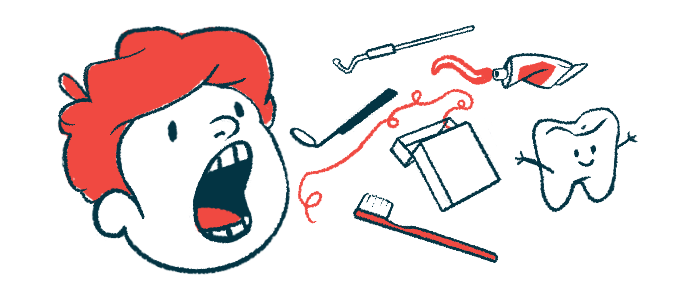Poor Oral Health Can Greatly Affect Quality of Life for Children With EB
'Dental care must be part of the overall management of the disease,' study says

The effect of epidermolysis bullosa (EB) on oral health significantly affects the quality of life of children living with the disease, a recent study highlights.
“The best way to help patients with EB and meet their demands is to improve daily oral hygiene habits and preventive measures (regular dental visits, professional cleaning, and topical fluoride application) to keep the teeth and mouth healthy,” the researchers wrote.
The study, “Perception of Oral Health–Related Quality of Life in Children with Epidermolysis Bullosa: A Quantitative and Qualitative Study,” was published in the journal JDR Clinical & Translational Research.
EB can cause a number of problems for mouth and oral health, including blisters or ulcers in the mouth, severe inflammation of the gums, and restricted ability to open the mouth. While several studies have analyzed how EB affects a person’s quality of life (QoL), the specific impact of oral health on life quality has not been researched.
To learn more, scientists in France administered the Child Oral Health Impact Profile (COHIP) to children with EB. The COHIP is a 34-item questionnaire that assesses oral health-related QoL along five domains: oral health, functional well-being, social-emotional well-being, school environment, and self image.
Of the 23 children who completed the questionnaire, 16 had dystrophic EB, six had EB simplex, and one had junctional EB. The children ranged in age from 5 to 17, and nine were girls.
Across all five domains of the test, the children scored significantly lower than normative values, indicating substantially worse oral health-related quality of life.
After completing the questionnaire, 10 children participated in semi-structured interviews to share more details about their experiences with oral health. The researchers highlighted several themes that emerged from these interviews.
“For the first time, the children’s words have allowed us to better understand how they live with the disease and their difficulties but also their ability to adapt,” the researchers wrote.
Children report pain, bleeding, sores in their mouths
‘The children reported experiencing pain, bleeding, and sores in their mouths that could interfere with eating. Some children expressed frustration that they could not eat whatever they wanted without discomfort.
“Even when I am in a lot of pain, I keep eating,” one child said.
“Sometimes it’s a bit difficult because sometimes mummy makes things, uh . . . that I can’t eat,” another said.
The children were generally knowledgeable about what strategies helped them to manage these sores, whether that involves trying to get rid of the sores quickly or deliberately leaving them be.
“I squeeze my mouth and, after that, it takes it [the blister] away and then . . . I wash my mouth,” one child said.
Another said that they “prefer to leave it, to let it go away on its own because, when I do [burst] it with my teeth, it makes wounds.”
In addition to pain and functional problems in the mouth, children also expressed discontent with the aesthetics of their smile.
“I just want them to give me new front teeth,” said one child. When asked how they’d like it done, the same child replied, “well, [put teeth in me] with a denture and then that’s it.”
The researchers noted that tooth replacement is “unfortunately … very complex” in EB because gum tissue is usually very fragile. As such, they stressed the importance of preventive measures to help preserve dental health for children with EB.
Issues with oral health could also cause problems for children attending school. Some children reported getting teased by classmates for having visible wounds or bad breath — “Sometimes they laugh at me,” said one child.
Wounds and scars in the mouth can also make talking to peers a challenge: “It would hurt me so much, so . . . I couldn’t speak,” one child said.
The children also often reported that having to manage their condition could make them feel isolated from their peers. For example, one participant said that, “because of the disease, I don’t eat with the others.”
Collectively, these findings highlight the importance of oral healthcare as part of routine medical care for EB, the researchers concluded.
“Dental care must be part of the overall management of the disease, involving regular checkups, preventive dental measures, and oral hygiene education, to avoid ending up in a hard-to-manage situation. … Therefore, more effective communication is required, not only between the dental and dermatological teams but also with the parents and caregivers,” they wrote.








